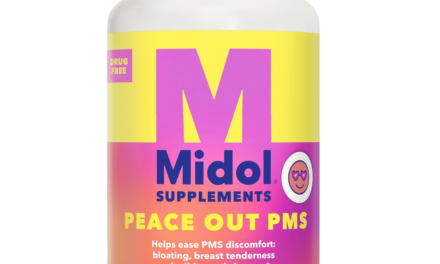Who says vacations are just for summer?
When the temps drop below 60ºF it’s a telltale sign that soup season has officially begun, and few things are more nourishing for the soul (and body) than a hearty soup that really sticks to both your bones and the sides of your beloved Le Creuset Dutch oven.
So, how can you turn a chicken noodle soup into a creamy chicken noodle soup recipe? Albert Nguyen, chef-instructor of Culinary Arts at the Institute of Culinary Education, says it’s soup-er easy. Ahead, Nguyen dishes out all of his expert-backed tips and tricks for thickening soup. (Be sure to read up on what to do with all your leftover soup before you begin—you’ll thank us later.)
5 quick and easy ways for how to thicken soup in mere seconds
1. Add puréed veggies to just about any stock
An excellent way to thicken soups (and add an extra boost of nutrition) is by adding puréed veggies to their base. “One of my favorite ways to thicken soups is to add a puréed vegetable—preferably ones that are high in starch and lower in fiber,” Nguyen says. “This usually incorporates more flavor and sometimes depending on the soup you will be making, uses vegetables that would have otherwise gone to waste, or vegetables that already existed in your soup.”
For example, Nguyen says if you’re making chicken soup, blending some of the celery, carrots, and onions (aka, mirepoix, a fundamental trifecta of ingredients for many soup recipes) can help add some consistency and richness to a typically liquidy soup.
2. Whisk in some powdered mashed potatoes
Before you scream bloody murder, Nguyen says powdered mashed potatoes are a secret weapon for making rich and creamy soups to keep in your back pocket. “Another really good ingredient to have on hand that easily thickens soups and doubles as a great coating for frying foods is powdered mashed potatoes.” Indeed, we’re equally shook. According to the chef, the dehydrated potato flakes act as the perfect starchy ingredient for thickening soups, all while adding a “homey potato flavor.” Swoon.
Used up the entire box of instant mash last Thanksgiving? No problem. Nguyen explains that adding a few spoonfuls of any leftover mashed potatoes into your soup can also help do the trick.
3. When in doubt, you can’t go wrong with a cornstarch slurry
By far the easiest way to thicken soup that guarantees a non-grainy result is by adding in cornstarch slurry. The key is ensuring the slurry mix has the adequate proportions: two parts liquid (cold or room temperature) to one part cornstarch. Then, all you have to do is mix it up until it’s fully dissolved before pouring it into your boiling pot of soup. “Add it to the soup little by little and bring it up to a boil to activate the starch,” Nguyen says. Remember: A little goes a long way.
4. Use your leftover starches
Got some leftover white rice or even pasta (and, of course, mashed potatoes)? Nguyen says they’re one of the best homemade soup tricks for thickening up the consistency. “When making your soup, scoop out about an eighth of your total volume of liquid and use it to boil these leftovers until they’re soft. When it’s soft, just blend them and add them back into your soup,” Nguyen says. The only thing that might be easier to do than this genius cooking hack is make this three-ingredient soup recipe.
5. Use a blender to emulsify the ingredients
According to Nguyen, by far the most useful equipment for thickening soups in a household would be an immersion blender. “They are great since they are hand-held and can be plugged in and brought to the soup pot for blending. It’s also nice when making smaller volumes of soup,” he says. That said, a blender can work wonders too. “Alternatively, a blender works well also, and definitely does a better job of blending things smoother. Yet, I still prefer the hand immersion blender for its compact size and flexibility in the kitchen.”
A few soup texture tips
Is it better to thicken soup with flour or cornstarch?
When it comes to achieving a rich and creamy texture and delicious flavor, Nguyen says you’ll want to be extra careful when using flour over cornstarch to thicken a soup. “Flour makes soups thicker and holds them at that viscosity better. However, it does add the flavor of flour to your soup and sometimes requires you to first make a roux which for some people can seem like extra work,” he explains. That’s why he tends to gravitate toward cornstarch, which he says is much easier to work with and won’t alter the flavor of your soup. Though, keep in mind that cornstarch won’t make soups as thick as flour would.
When working with thinner broths, cornstarch would work well. However, if you’re looking to make something with a “fuller” body, like a broccoli cheddar soup, then flour in a roux (specifically a lighter, white or blonde roux) would be the best way to go to achieve a more creamy and velvety mouthfeel, Nguyen says.
Does boiling help thicken soup?
When working with cornstarch, flour, or other starchy ingredients, boiling is necessary to thicken the mixture. “Once you add your preferred thickener it should be brought up to a boil for it to change the consistency of your soup,” Nguyen says. After about a minute or two of boiling, you should begin to see results—if it hasn’t thickened to your liking by then you may need to add more of the thickening agent.
Keep in mind that you may need to adjust the seasoning of your soup if you continue to add additional ingredients. That said, even if you don’t have flour or cornstarch on hand you can always rely on some simple science (aka evaporation) that can help thicken soup by merely reducing the liquid.
Does soup thicken as it cools?
Soup that contains some amount of starch, whether it be potatoes, rice, pasta, or an added thickener like cornstarch or flour will definitely thicken once it cools. “It won’t be a significant amount but starches once activated (brought to a boil) will retain this viscosity and continue to thicken slightly more as it cools. It’s similar to a custard or pudding: The cornstarch makes the soup runnier when hot. But when it cools, it gets a thicker consistency,” Nguyen says.
What to do if your soup is too thick
If worse comes to worse, and you find that your soup has overly thickened, Nguyen says the only way to fix it is by adding more liquid. “Preferably you will be adding a flavorful liquid such as stock. If you don’t have stock, then water will have to do,” he says. But, remember: this’ll dilute the flavors and seasonings—which is why tasting as you go is a chef’s number one rule in the kitchen.
To avoid this situation altogether, Nguyen says to always add the thickener of your choice in small increments, giving it time to boil and cook in between. If need be, you can always add more.
Feeling confident about your soup-making abilities? These anti-inflammatory soup recipes are calling your name.
Creamy, nourishing soup coming right up:
Recommended Story For You :

The alpine secret for healthy weight loss

The Most Potent Fast-Acting Formula For Incinerating Stubborn Fat

Real Cortexi Users Real Life‑Changing Results

This Cold Drink Might Trigger Your Prostate

Red Boost is a powerful new formula for boosting male sexual health.

Everything you eat or drink eventually reaches your liver for processing.

Brand New Probiotics Specially Designed For The Health Of Your Teeth And Gums

Empowering You to Take Control of Your Blood Sugar Health!

Scientists Finally Discover the Root Cause of Belly Fat and Unexplained Weight Gain






